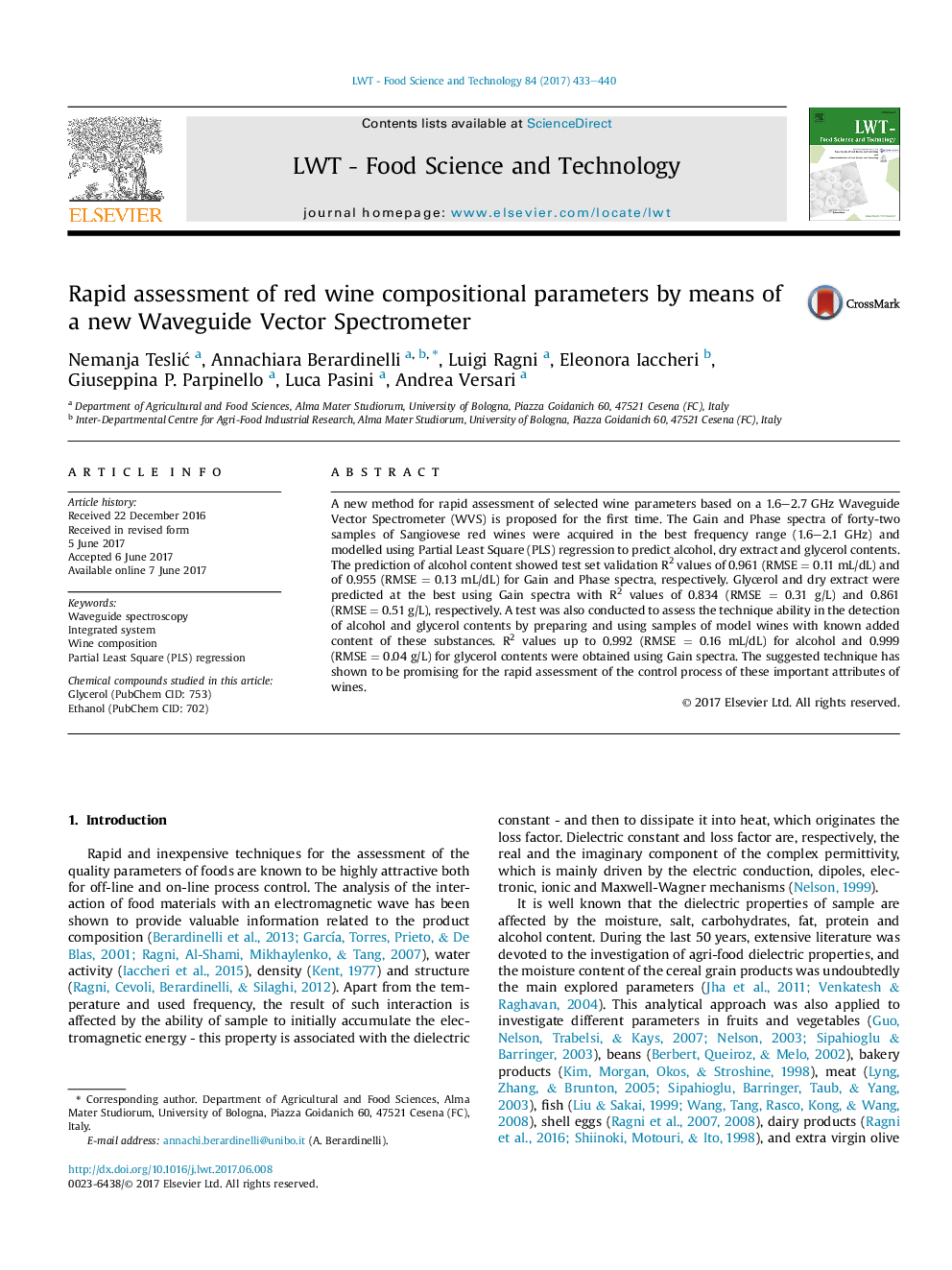| Article ID | Journal | Published Year | Pages | File Type |
|---|---|---|---|---|
| 5768961 | LWT - Food Science and Technology | 2017 | 8 Pages |
â¢Non-invasive analysis of selected wine parameters was conducted with a Waveguide Vector Spectrometer (WVS).â¢Alcohol, glycerol and dry extract were measured on red wines by FTIR and waveguide spectroscopy in the frequency range 1.6-2.7 GHz.â¢The prediction of selected wine parameters was based on PLS regression with measures obtained with both Gain and Phase spectra.
A new method for rapid assessment of selected wine parameters based on a 1.6-2.7Â GHz Waveguide Vector Spectrometer (WVS) is proposed for the first time. The Gain and Phase spectra of forty-two samples of Sangiovese red wines were acquired in the best frequency range (1.6-2.1Â GHz) and modelled using Partial Least Square (PLS) regression to predict alcohol, dry extract and glycerol contents. The prediction of alcohol content showed test set validation R2 values of 0.961 (RMSEÂ =Â 0.11Â mL/dL) and of 0.955 (RMSEÂ =Â 0.13Â mL/dL) for Gain and Phase spectra, respectively. Glycerol and dry extract were predicted at the best using Gain spectra with R2 values of 0.834 (RMSEÂ =Â 0.31Â g/L) and 0.861 (RMSEÂ =Â 0.51Â g/L), respectively. A test was also conducted to assess the technique ability in the detection of alcohol and glycerol contents by preparing and using samples of model wines with known added content of these substances. R2 values up to 0.992 (RMSEÂ =Â 0.16Â mL/dL) for alcohol and 0.999 (RMSEÂ =Â 0.04Â g/L) for glycerol contents were obtained using Gain spectra. The suggested technique has shown to be promising for the rapid assessment of the control process of these important attributes of wines.
Graphical abstractDownload high-res image (150KB)Download full-size image
